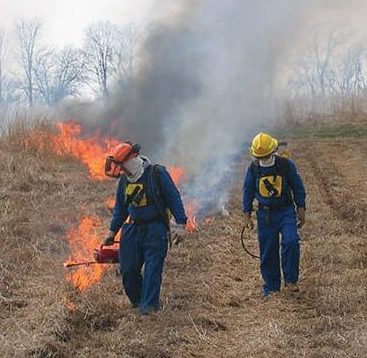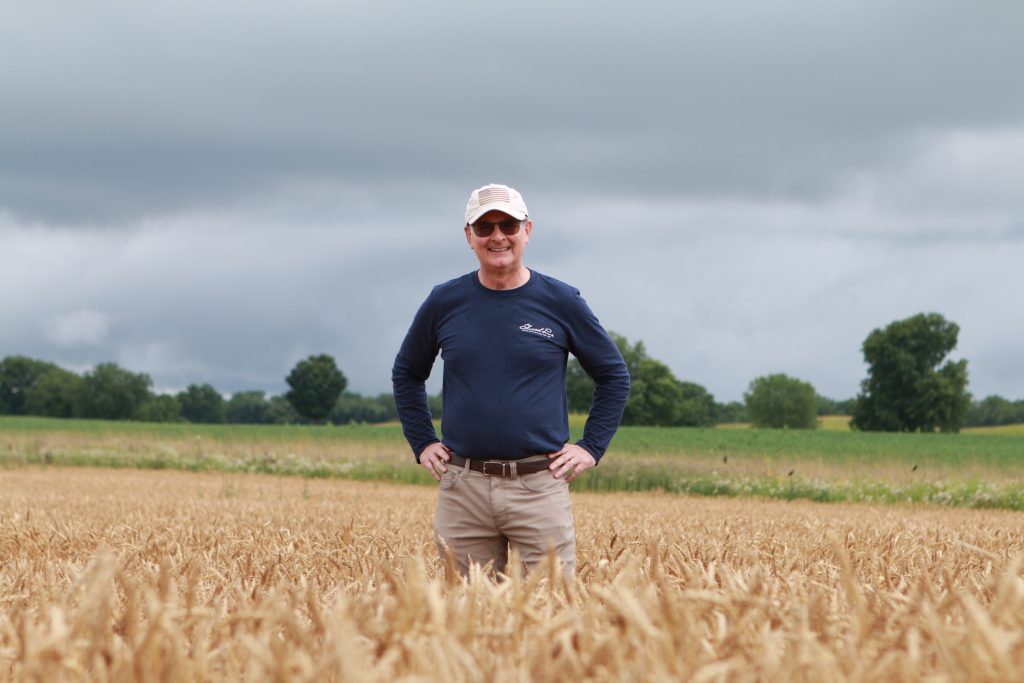It’s burn season at Big Rock Valley, the foundation’s 2,000-acre property in southwest Michigan. By burns, I’m referring to prescribed burns — controlled, planned burning done to improve the land and increase its ecological value.
The foundation has been conducting prescribed burns for nearly 15 years, and I find it fascinating how much science, thought and preparation go into these events. It’s not simply a matter of throwing down a match.
The right stuff
To begin with, weather conditions need to be optimal. You’re looking for temperatures between 40 and 80 degrees, relative humidity between 22 and 50 percent, cloud cover below 40 percent and wind speeds of 3 to 14 mph — enough to get the fire moving, but not too gusty or else the flames can be difficult to control.

You also need the right equipment and a trained team. The foundation has developed a variety of custom equipment to make our burns safer and more efficient. Among these is our “War Wagon,” a field sprayer that has been converted into a fire-suppression trailer with a 500-gallon tank and innovative plumbing system. The War Wagon has seven nozzles that can spray water from underneath and its sides. It also has a Plexiglas heat shield on one side so burn crew members can get closer to fires.
Because of the stamina required during a prescribed burn, foundation employees who want to participate must pass a backpack test. This involves carrying a 25-pound backpack for two miles in less than 30 minutes. The first time I did this, I had been training for a marathon, so I thought I’d ace it with no effort. To my surprise, it was hard — harder than I thought — and the next day I had some unexpected sore muscles.
Getting ready
There’s also a lot of behind-the-scene work that goes on before the first flame is lit, which varies depending on the habitat you want to burn. Our prairie burns are pretty straightforward, as strips of clover and cool-season grasses have been planted around prairie borders. We use these strips as firebreaks and they are mowed and wet just prior to a burn. Wetlands require much more effort. Because you can’t get vehicles or heavy equipment into swampy areas, firebreaks typically have to be cut by hand.
Prep work also includes:
- Obtaining permits from the local fire department.
- Notifying nearby property owners.
- Posting signs on relevant roads so people won’t be alarmed by the smoke.
- Developing a plan about the burn’s timing and objectives.
When it comes to the burn plan, different techniques are used, such as backfires, flank fires and strip fires, depending on the unit of land you’re burning and weather conditions. At the foundation, we try to use backfires (which move forward against the wind) as much as possible because they are slower and easier to control. We also leave a hole open until the very end, to give wildlife a corridor of escape.
Staying alert
Communication is essential during a prescribed burn. Everyone on the burn crew needs to understand the burn plan and their role in it. They also need to be ready for surprises. For example, the wind can suddenly change direction and either slow or speed the fire’s progress, and you may need to change tactics. Embers can be carried over a firebreak and ignite an adjacent parcel of land, so everyone has to remain vigilant about what’s going on around them. Our burn crew members carry two-way radios so they can communicate about what’s happening from their various posts.
For me, participating in a prescribed burn produces a range of emotions. In the beginning, there’s a combination of anxiety and excitement. Anxiety, because a controlled burn is a complex operation and you are, after all, working with a destructive force and don’t want anything to go wrong. Excitement, because when the fire takes off, it can be a pretty dramatic sight. This is especially true in prairies where there are tall grasses like switchgrass, and flames can reach 20 feet or higher.
At the end of the burn, there’s a real sense of accomplishment. You’ve left something better than you found it. It’s somewhat counter-intuitive because when you’re done, most of what you see is black earth. Yet prescribed burns provide a host of benefits: They prevent catastrophic fires by reducing dead vegetation. They stimulate native plants and retard invasive ones. They release nutrients back into the soil and help protect trees from disease and insects. They improve habitat for many wildlife species.
So when you work a burn, you can accomplish something in a single afternoon that’s extremely beneficial to the environment. Plus, it’s fulfilling to be on the team. There’s nothing like hard physical work with a group of people to accomplish a shared goal.
Originally published on LinkedIn Pulse on April 18, 2107
